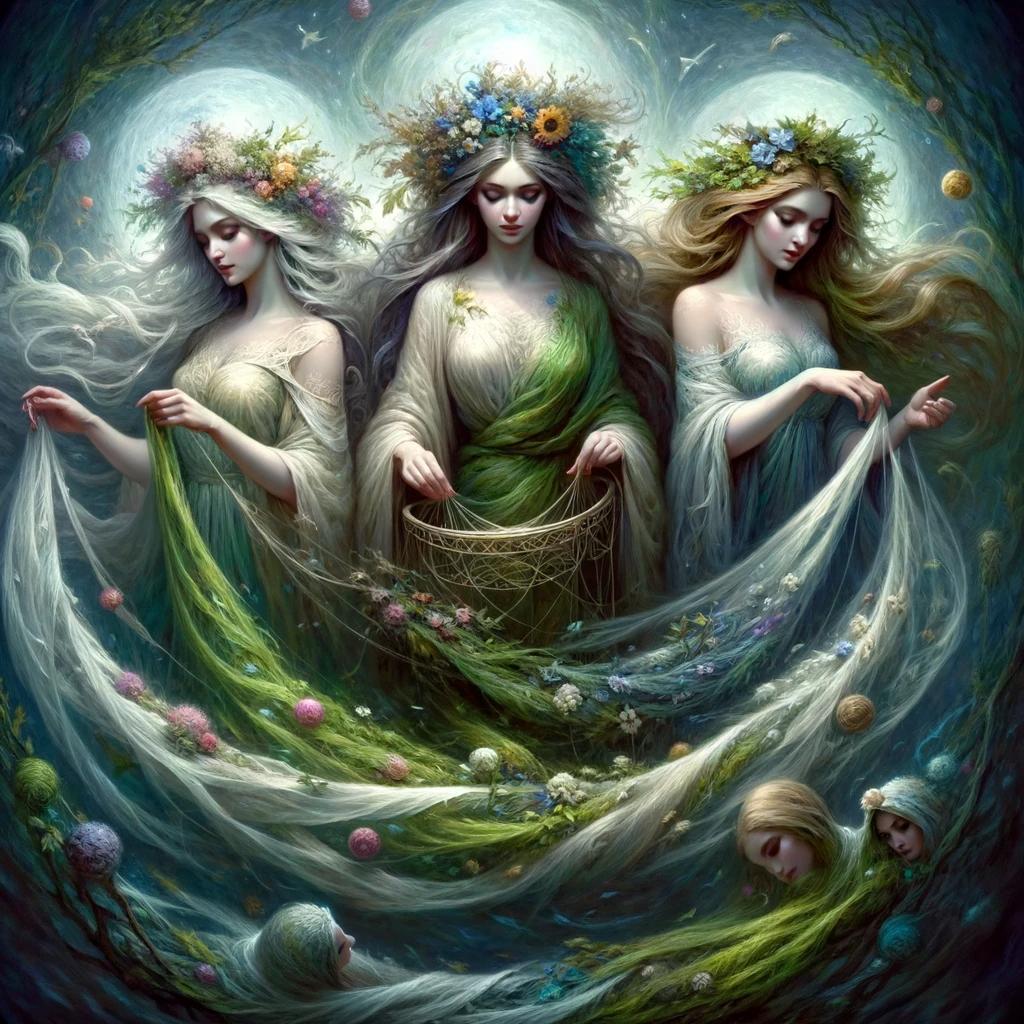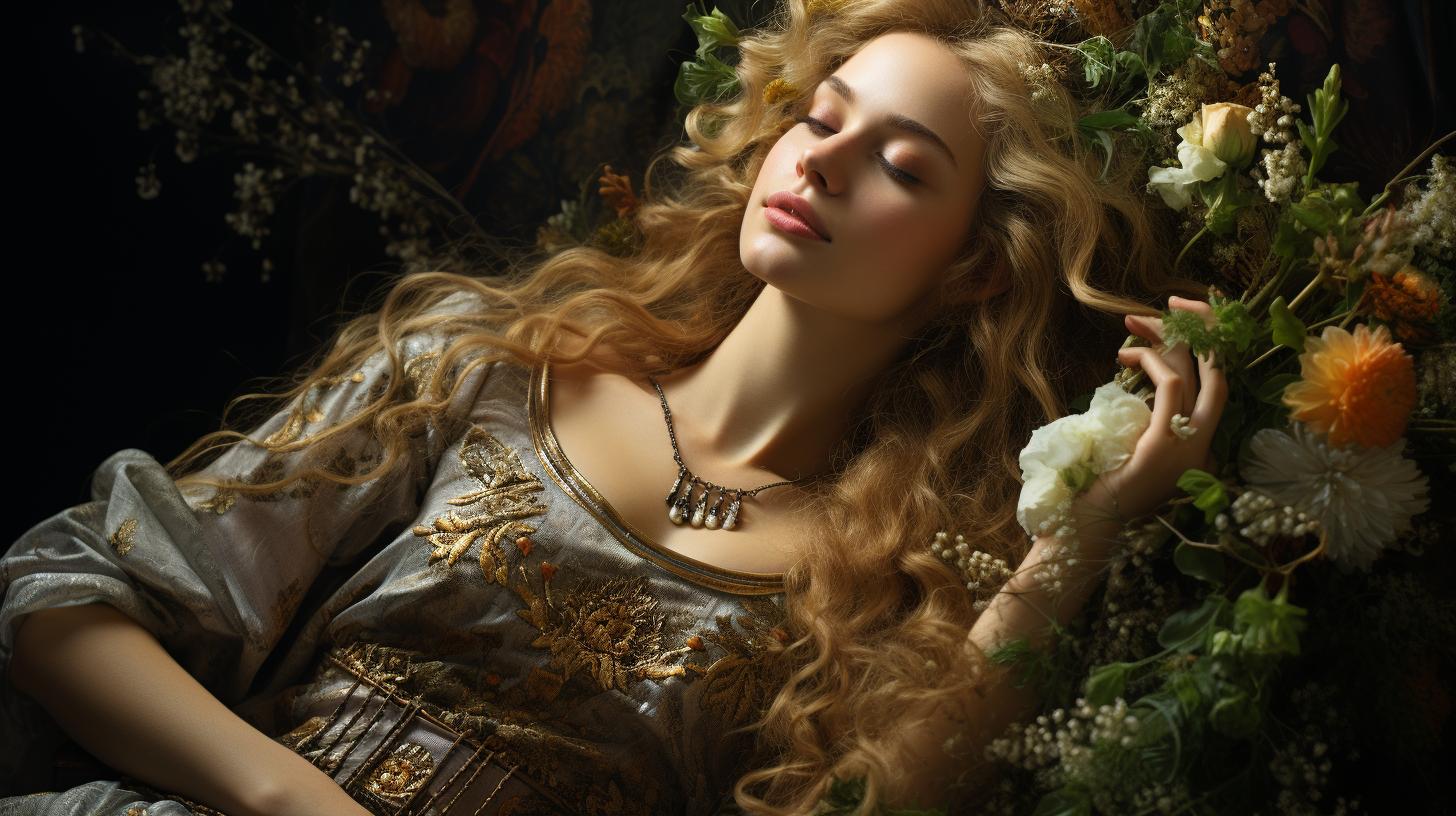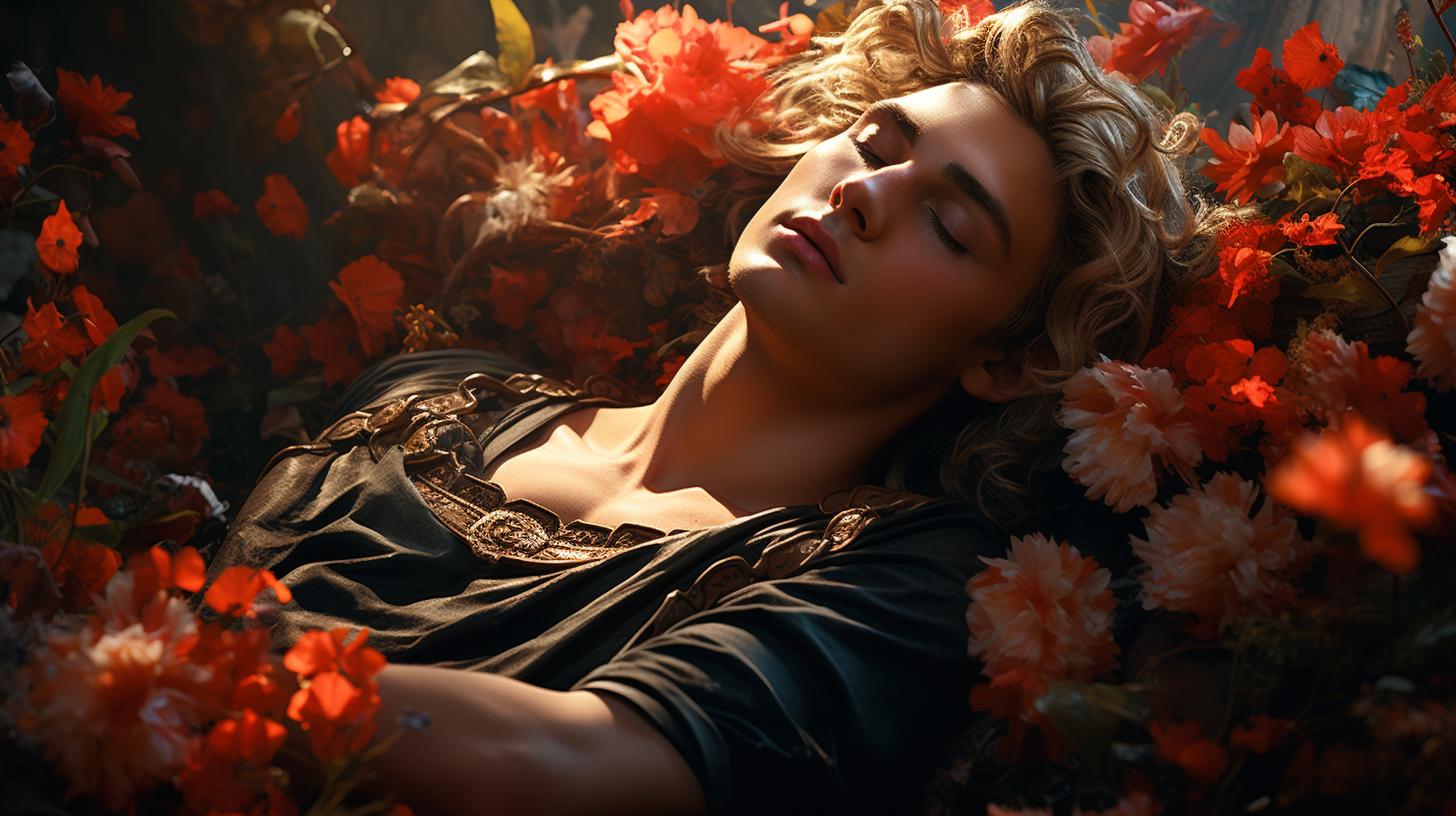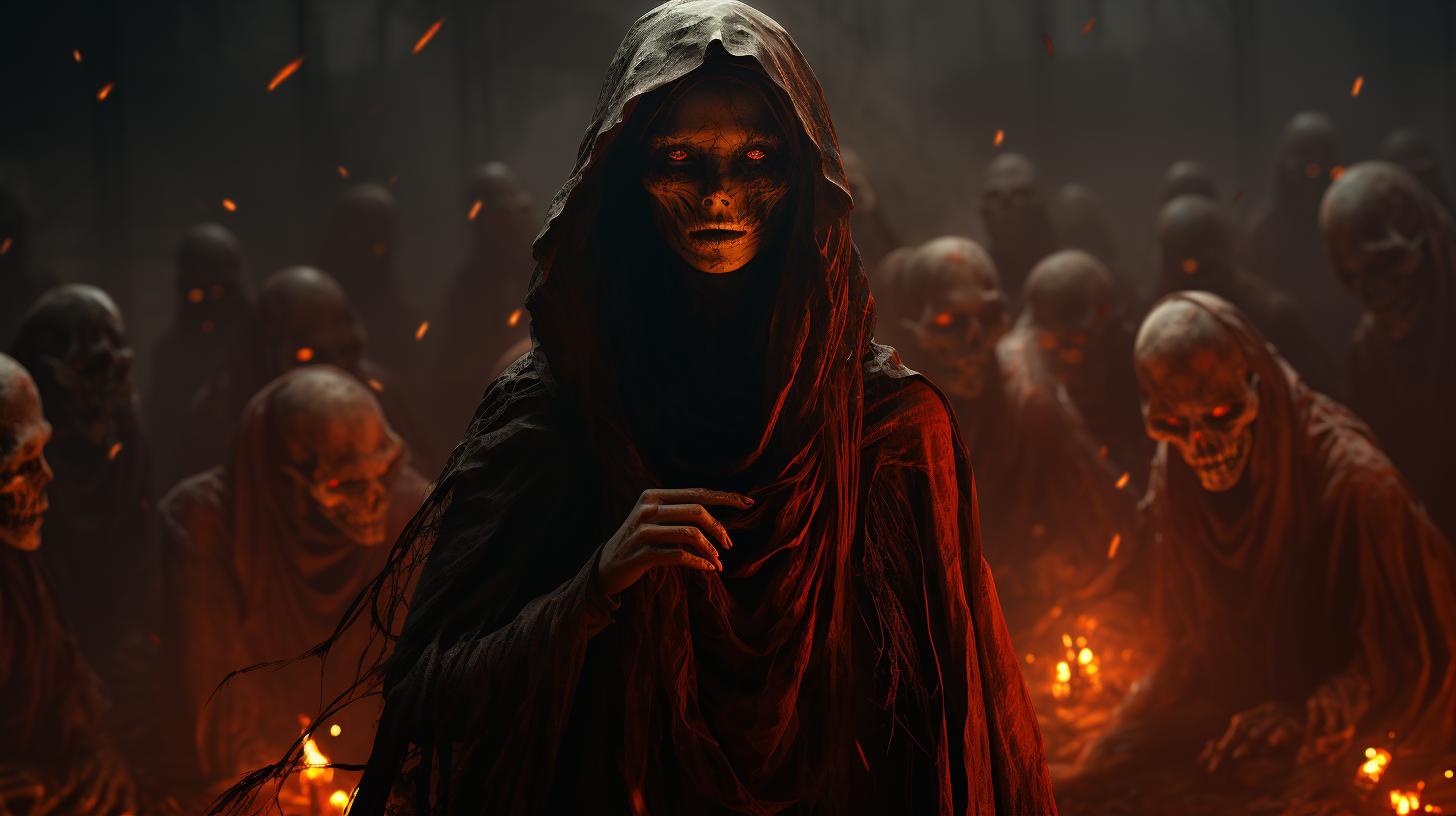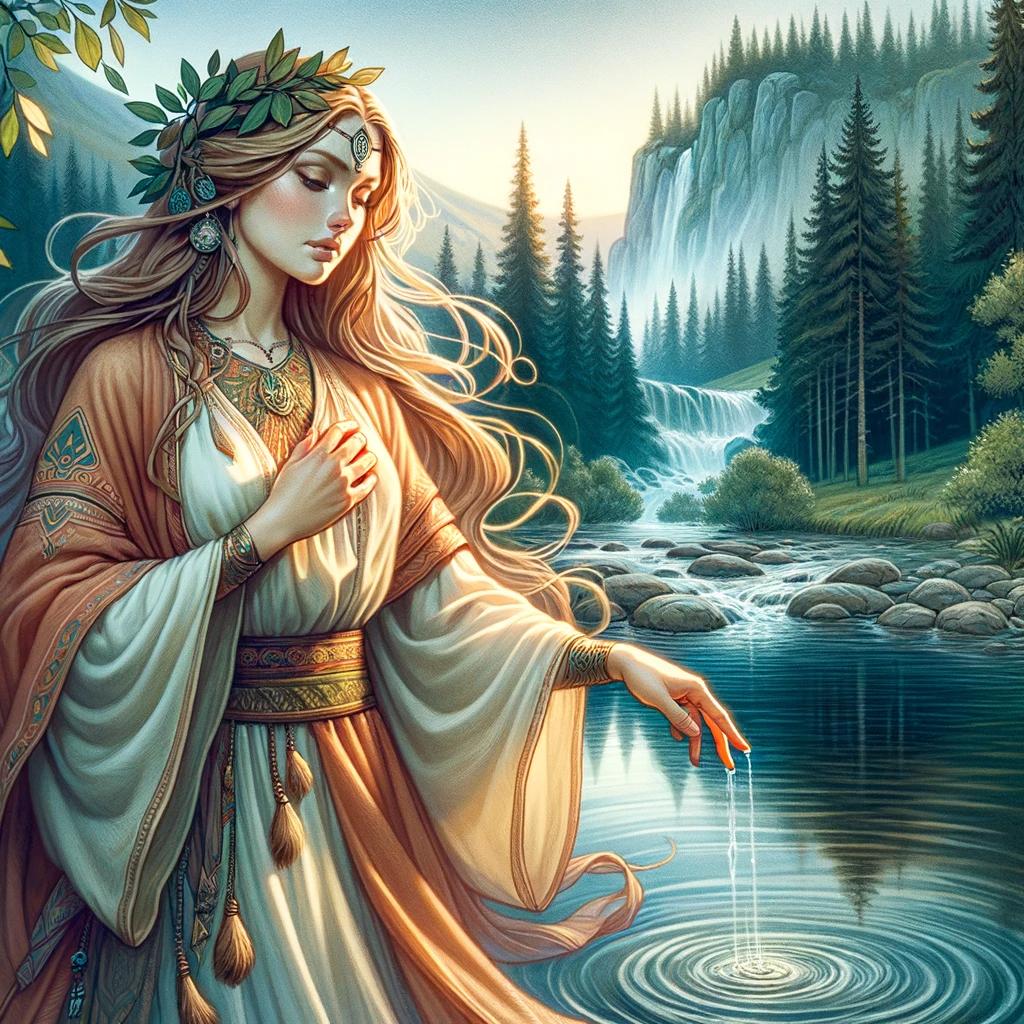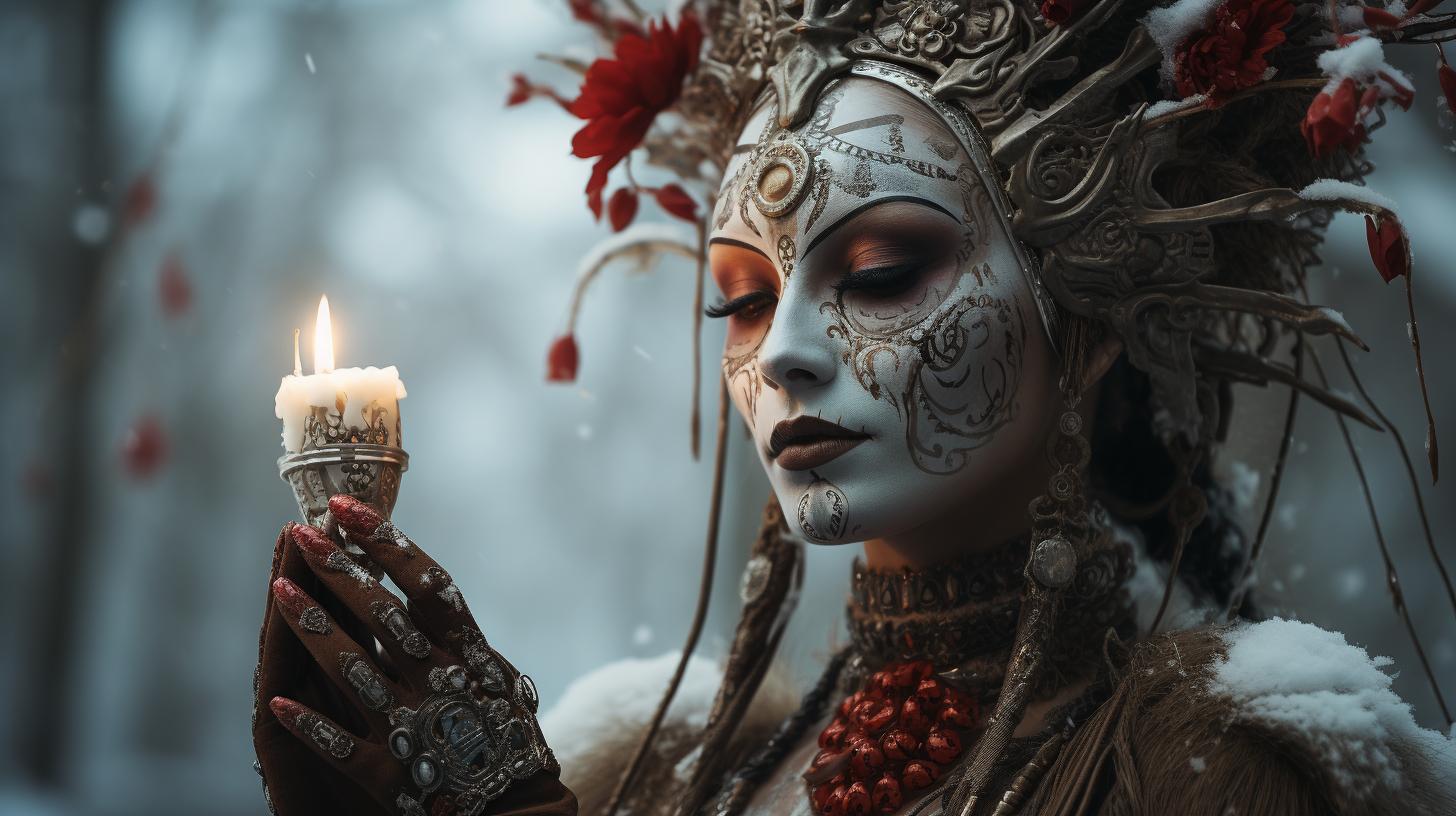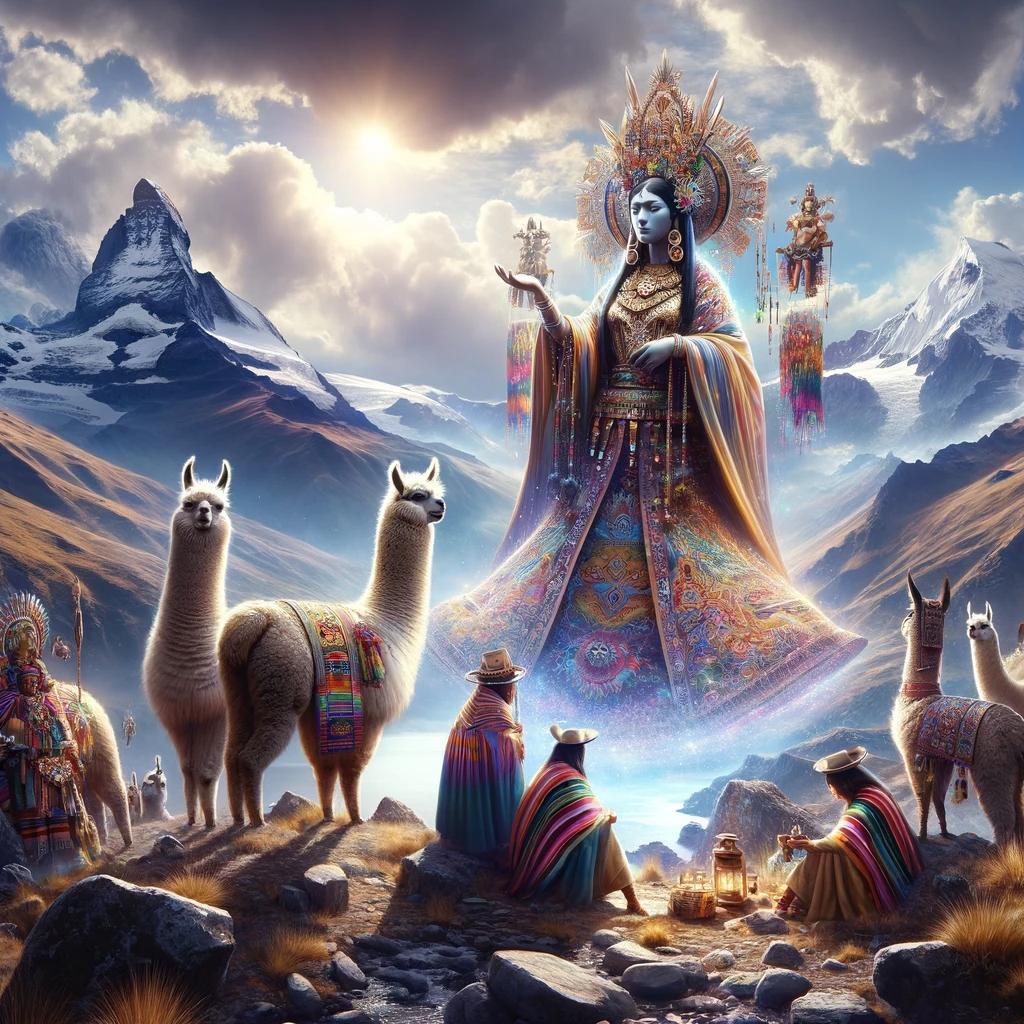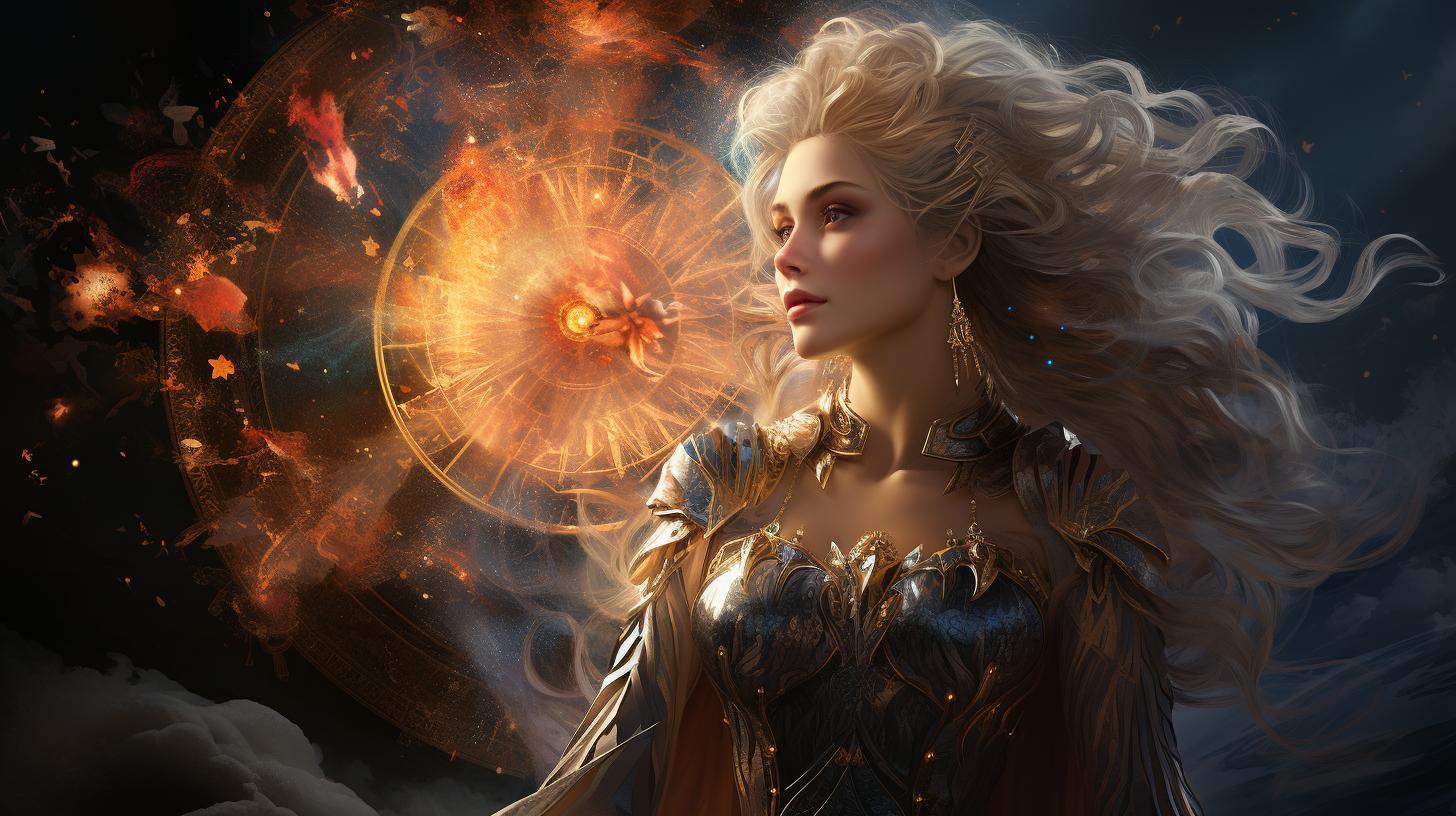Perperuna: Unveiling the Ancient Slavic Rain Goddess and Ceremonial Rites
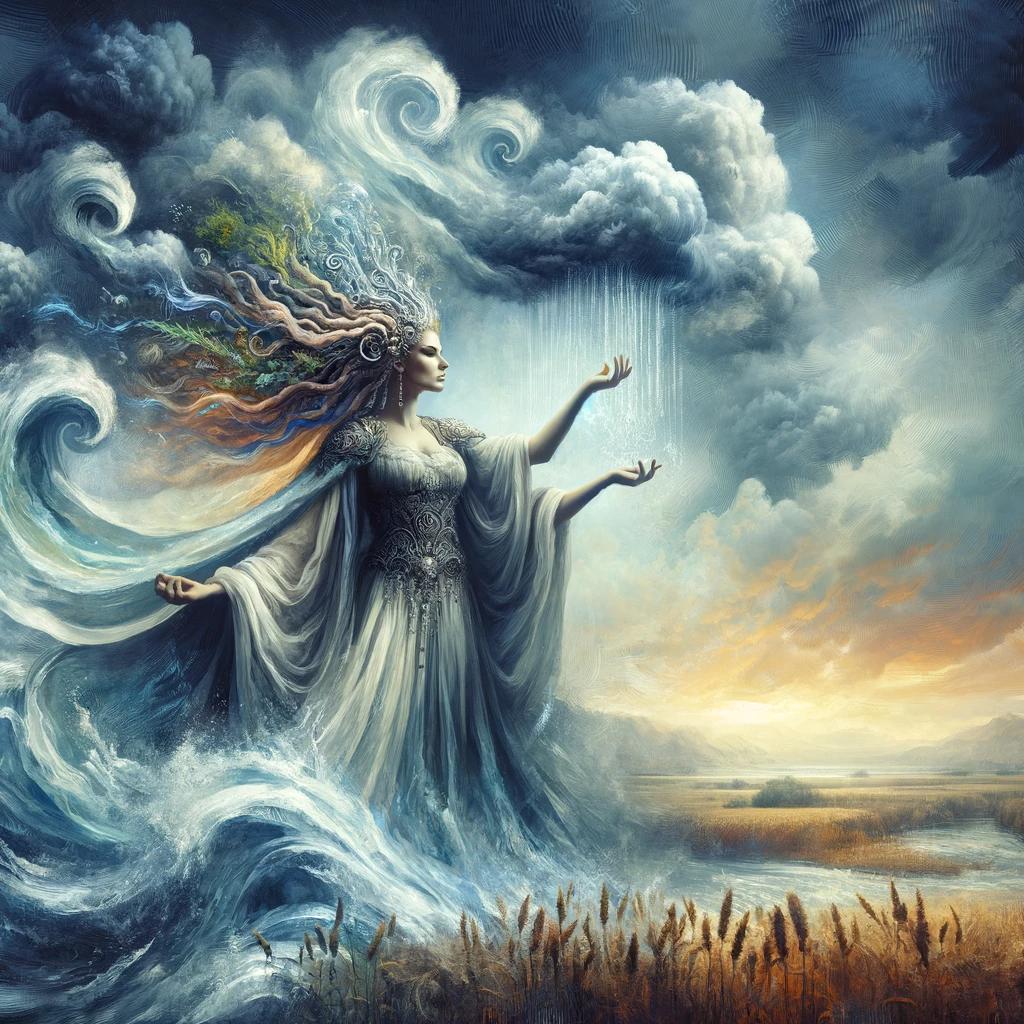
Perperuna, the ancient Slavic rain goddess, has fascinated cultures across Southeast Europe and neighboring regions for centuries. This deity, intricately linked with the Slavic god Perun, holds great mythological significance.
The rituals of Dodola, associated with Perperuna, involved singing and dancing performed by children during droughts in order to bring forth rainfall. These customs spread with Slavic migrations to the Balkans, and variations of the traditions can be observed in Bulgaria, Croatia, Macedonia, Montenegro, Serbia, and beyond.
The origins and historical evolution of Dodola and Perperuna continue to be subjects of scholarly debate, shedding light on the rich cultural tapestry of the past.
Perperuna: The Ancient Slavic Rain Goddess
Perperuna, an enigmatic figure in Slavic mythology, holds great significance as the rain goddess revered by ancient cultures.
This section delves into the origins and mythological importance attributed to Perperuna, exploring the rich tapestry of beliefs and customs surrounding her.
Origins and Mythological Significance
The exact origins of Perperuna remain shrouded in mystery, yet her presence transcends time and continues to captivate the imagination. Ancient Slavic communities held a deep reverence for Perperuna, attributing to her the power to bestow life-giving rain upon their parched lands.
Connection to the Slavic God Perun
Perperuna’s close association with the Slavic god Perun further enhances her mythological significance. As the god of thunder and lightning, Perun symbolizes strength and authority. It is believed that Perperuna, as his wife or companion, played a vital role in maintaining the delicate balance between the elements, ensuring the fertility of the earth.
Variations and Names of Perperuna in Different Regions
Throughout the Slavic lands and neighboring regions, Perperuna was known by various names and had slight variations in her mythology. From Dodole to Dudola, these regional differences reflected the diverse cultural interpretations and adaptations of this revered rain goddess.
These variations, though unique, demonstrate the enduring legacy and widespread recognition of Perperuna across different Slavic communities.
Dodola: The Ceremonial Rites of Singing and Dancing
Dodola, intertwined with the ancient Slavic rain goddess Perperuna, encompassed meaningful rituals involving singing and dancing. These customs were specifically performed during times of drought, aiming to summon rainfall and alleviate the parched land.
Let’s delve into the intricacies of Dodola and its significance in Slavic culture.
Dodola and Perperuna: Rituals for Rain during Droughts
Within the realm of Dodola, the rituals were deeply connected to the dire need for rain in arid times. Through a combination of rhythmic singing and exquisite dancing, participants sought to invoke the mercy of the rain goddess Perperuna.
The Dodola rites were seen as an entreaty to the gods, urging them to bring forth the life-giving nourishment of rainfall to the drought-stricken lands.
Key Points:
- Dodola rituals centered around the desperate desire for rain during dry periods.
- Singing and dancing stood as pivotal components in these ceremonies.
- Participants aimed to invoke the rain goddess Perperuna through their rhythmic performances.
Dodola as a Central Figure in the Customs
Enshrined within the Dodola customs, the figure of Dodola herself held a central role.
Often portrayed as a symbolic representation of fertility and abundance, Dodola embodied the essence of the rain goddess and her power to provide relief from drought. Participants revered Dodola, recognizing her pivotal position in the ceremonies as the intermediary between the mortal realm and the divine forces that controlled the weather.
Key Points:
- Dodola symbolized fertility and abundance, serving as a representation of the rain goddess Perperuna.
- Participants held Dodola in high regard due to her significant role in the customs.
- Dodola acted as the vital link between the mortal realm and the divine forces governing rainfall.
Role of Children in Performing the Dodola Rites
Integral to the Dodola rites were the active involvement of children.
Believed to possess pure hearts and unwavering faith, children played a crucial role in carrying out the ceremonial practices. Their innocent voices and nimble footsteps were seen as powerful conduits for conveying the pleas and desires of the community to the rain goddess Perperuna.
The participation of children added an air of purity and hope to the Dodola rituals, further enhancing their effectiveness.
Key Points:
- Children played a significant role in the execution of the Dodola rites.
- Their pure hearts and unwavering faith were deemed instrumental in conveying the community’s aspirations to Perperuna.
- Their involvement added an element of innocence and optimism to the ceremonies.
Cultural Spread and Adaptations
The customs of Dodola and Perperuna, deeply rooted in Slavic culture, have transcended borders and influenced rainmaking practices in various regions.
Slavic migrations played a significant role in spreading these rituals throughout Southeast Europe and beyond. Additionally, similar customs can be found in other parts of the world, showcasing the universal human fascination with rainfall and its importance for agricultural prosperity.
Influence of Slavic Migrations on Dodola and Perperuna
The migrations of Slavic people to the Balkans from the 6th to the 10th centuries brought with them their unique traditions, including Dodola and Perperuna. As Slavic communities settled, these rituals merged with local beliefs and customs, resulting in diverse variations across different regions.
The cultural exchange and blending of practices contributed to the adaptation and evolution of Dodola and Perperuna within these new environments.
Similar Rainmaking Customs in Other Regions
Interestingly, rainmaking customs akin to Dodola and Perperuna can be observed in other regions beyond the Slavic cultural sphere. Comparable rituals exist in the Balkans, the Caucasus, the Middle East, and even North Africa.
These similarities suggest common human desires to control and influence rainfall, highlighting the significance of water in agricultural societies throughout history.
Debates on Origins: Paleobalkanic or Thracian?
Scholars have engaged in debates regarding the origins of Dodola and Perperuna. Some argue for a Paleobalkanic origin, asserting that these practices predate the arrival of the Slavs in the Balkans.
Others propose a Thracian influence, suggesting that Dodola and Perperuna may have stemmed from ancient Thracian rainmaking traditions. As the discussions continue, further research and archaeological evidence may shed light on the true historical roots of these fascinating customs.
Ritual Practices and Beliefs
The ritual practices of Dodola and Perperuna encompassed a range of elements that held deep significance in Slavic culture. These practices were centered around singing and dancing, demonstrating the key role of music and movement in invoking the powers of the rain goddess and weather deities.
Singing and Dancing: Essential Elements of Dodola and Perperuna
Singing and dancing formed the core components of the Dodola and Perperuna rituals. Children, dressed in vibrant traditional costumes, would come together in groups to perform intricate choreography and melodic chants.
The synchronized movements and harmonious vocalizations were believed to create a powerful energy that would attract the attention of the deities, calling forth the much-needed rain.
Significance of the Rain and Weather Deities
The divine connection between Dodola and Perperuna and the natural elements was of great importance to the Slavic people.
Rain was seen as a life-giving force, essential for the fertility of the land and the well-being of communities. The rain and weather deities were revered for their ability to bring balance to the environment, ensuring agricultural abundance and overall prosperity.
Symbolism and Importance of Dodola’s Connection to Lada/Lado/Lela
Within the context of Dodola and Perperuna, the association with the Slavic goddess of spring, Lada/Lado/Lela, held significant symbolic meaning. It represented the cyclical nature of life, the transition from the barrenness of drought to the revitalization of spring and growth.
Dodola’s connection with Lada/Lado/Lela symbolized the transformational power of rain, linking the rituals to the renewal and regeneration of both nature and human life.
- The rituals of Dodola and Perperuna centered around singing and dancing, performed by children.
- These practices were believed to harness the power of music and movement to attract the rain.
- Rain and weather deities were revered for their role in ensuring agricultural abundance and community prosperity.
- Dodola’s connection to Lada/Lado/Lela symbolized the transformative nature of rain and the cycle of life.
By engaging in these ritual practices and recognizing their deeper symbolism, the Slavic people sought harmony with the natural world and a sense of connection to the divine forces that governed it.
Today, the importance of these rituals can still be seen in the preservation efforts and their incorporation into contemporary Slavic folklore and artistic expressions.
Dodole, Dudola, and Papaluga: Variations in Different Slavic Countries
Dodole, Dudola, and Papaluga are various names associated with the ancient customs and rituals related to Perperuna that were practiced in different Slavic countries.
These variations reflect the rich cultural diversity of the region and highlight the unique aspects of each local tradition.
Names and Variations of Dodola
The Dodole rituals were known by different names in various Slavic regions, showcasing the distinct linguistic and cultural influences. Some of the names for Dodola include Dodole, Dudola, Dudula, Dudule, Papaluga, Mamaruta, and more.
These variations were considered taboo alterations to avoid disrespecting the sacred name of the pagan deity.
Analysis of Dodola’s Association with Thunder and Spring
The name Dodola is cognate with the Lithuanian word for “thunder,” suggesting a potential association with the powerful forces of nature. Moreover, the variations of Dodola’s name are also linked to the Slavic goddess of spring, Lada/Lado/Lela, further connecting the rituals to the cyclical nature of seasons and the renewal of life.
Customs Practiced in Bulgaria, Croatia, Macedonia, Montenegro, and Serbia
In the countries of Bulgaria, Croatia, Macedonia, Montenegro, and Serbia, Dodole and its variations were prominent customs performed during droughts to invoke rainfall. These rituals involved singing and dancing, typically conducted by children.
The specific practices and regional nuances varied, highlighting the cultural nuances and local interpretations of the ancient traditions.
- Customs of Dodole in Bulgaria
- Variations of Dudola in Croatia
- Macedonia’s Practices of Dodola and its Variants
- Montenegro’s Rituals and Beliefs Surrounding Dodola
- Serbian Traditions and Celebrations of Papaluga
These customs served as a tangible link to the past, preserving the cultural heritage and offering insights into the historical connections between the Slavic communities in these countries.
Existing Evidence and Academic Perspectives
Historical Documentation and Studies on Dodola and Perperuna
There is a wealth of historical documentation and scholarly studies that shed light on the rituals of Dodola and Perperuna. Numerous written accounts from various Slavic regions provide insights into the religious and cultural practices associated with these rainmaking customs.
In addition, archaeological discoveries such as artifacts, inscriptions, and ancient texts contribute to our understanding of the rituals’ significance and evolution over time.
Controversies and Different Interpretations
Like many ancient traditions, Dodola and Perperuna have sparked debates and diverse interpretations among scholars. Differences arise regarding their exact origins, whether they derive from Paleobalkanic influences or Tracian traditions.
Some experts propose an overlap with other rain deities in neighboring cultures, while others emphasize the unique aspects of Dodola and Perperuna. These contrasting viewpoints underline the complexity and multi-layered nature of the rituals’ history and symbolism.
Potential Revivals and Preservation Efforts
With the decline of traditional practices in modern times, there have been efforts to revive and preserve the customs of Dodola and Perperuna. Cultural organizations, researchers, and enthusiasts work together to document and promote awareness of these rituals.
Through festivals, educational programs, and community engagement, there is a concerted effort to ensure that this ancient cultural heritage continues to be celebrated and understood for generations to come.
Perperuna in the Modern Context
Cultural Relevance and Significance Today
Perperuna, the ancient Slavic rain goddess, continues to hold cultural relevance and significance in contemporary times.
Despite the shift towards Christianity and the fading of old pagan beliefs, Perperuna’s legacy perseveres through various ways. She serves as a symbol of resilience, connection to nature, and the importance of rainfall for agricultural communities.
Incorporation of Dodola and Perperuna in Festivals and Events
The customs and rituals of Dodola and Perperuna have found their place in modern-day celebrations and festivals. Communities in Bulgaria, Croatia, Macedonia, Montenegro, Serbia, and other Slavic regions pay homage to their heritage by organizing events that showcase traditional songs, dances, and symbolic rituals associated with Dodola and Perperuna.
These festivities not only preserve cultural traditions but also bring people together to celebrate their shared history.
Perperuna in Contemporary Slavic Folklore and Art
The lasting impact of Perperuna can be seen in the vibrant realm of Slavic folklore and art. Artists, writers, and musicians draw inspiration from Perperuna and incorporate her motifs into their creations.
From paintings and sculptures to literature and music, Perperuna’s imagery and symbolism continue to inspire and captivate modern audiences, keeping her mythology alive in the minds and hearts of people.
The ancient customs of Dodola and Perperuna hold a profound significance in Slavic culture, transcending time and connecting us to our ancestral roots.
These rituals, passed down through generations, symbolize our deep reverence for nature and our reliance on the elements for survival. As we reflect upon their enduring legacy in the modern era, we are reminded of the importance of preserving and honoring our cultural heritage.
Acknowledgment of Cultural Diversity and Connection
Through the study of Dodola and Perperuna, we not only recognize the unique customs practiced in different Slavic regions but also acknowledge the interconnectivity between diverse cultures. These rituals bear similarities with rainmaking traditions observed in other parts of the world, fostering a sense of shared human experience and demonstrating the universality of our quest for harmony with nature.
Appreciating Cultural Exchange
- Exploring the influence and exchanges between Slavic and neighboring cultures
- Recognizing the contributions of different traditions to the development of Dodola and Perperuna
- Celebrating the richness of cultural diversity in the Balkans and beyond
Embracing Unity in Diversity
- Highlighting the common threads that unite various rain-worshipping rituals
- Promoting inclusivity and understanding among different cultural practices
- Fostering cross-cultural appreciation and collaboration in preserving intangible heritage
Perperuna in the Modern Context
As we navigate the complexities of the modern world, the legacy of Dodola and Perperuna continues to inspire contemporary Slavic culture.
These ancient customs find resonance in various aspects of our lives, from festivals and events to folklore and art, showcasing their adaptability and timelessness.
Revivals and Preservation Efforts
- Exploring contemporary efforts to revive and reintegrate Dodola and Perperuna into cultural practices
- Supporting initiatives that aim to document and safeguard the rituals for future generations
- Recognizing the importance of maintaining the authenticity and integrity of these customs
Cultural Relevance and Resurgence
- Examining the role of Dodola and Perperuna in modern Slavic festivals and events
- Discussing the impact of these rituals on contemporary artistic expressions
- Exploring how Dodola and Perperuna contribute to the identity and cultural pride of Slavic communities
.











